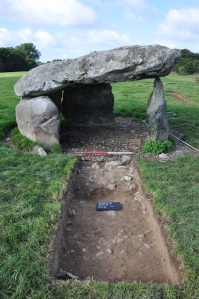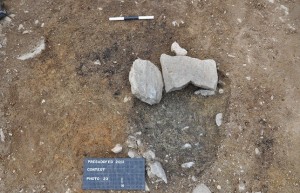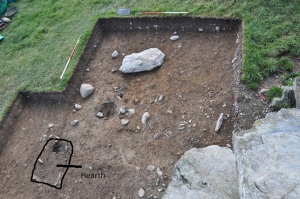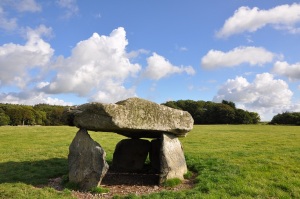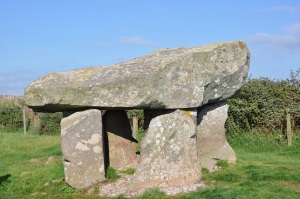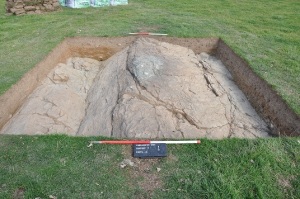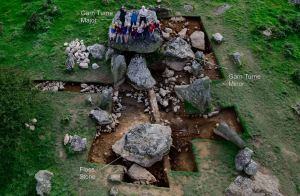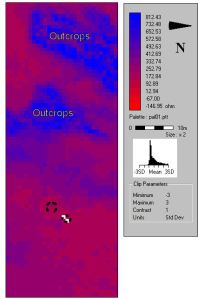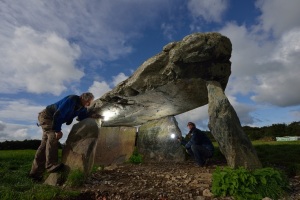
One of Adam’s (AerialCam) wonderful photos from yesterday
It was our last day of digging and recording on site today, and we are all done, expect for backfilling and replacing the turf tomorrow. There were some last minute surprises, both good and bad.
First for the bad news. The rammed platform in Trench E which looked so promising contained modern finds – so that is not prehistoric. Underneath the platform we came down onto a steep-sided cut, which produced more modern finds from about 40cm down. So definitely not prehistoric. Precisely what a deep hole is doing right next to a dolmen is anyone’s guess: our best guess was a latrine!
But good news too. We found a cut for a socket for the single standing stone in the collapsed dolmen – this means that this stone was placed into a socket and probably stood before the dolmen was built – whether by a few minutes, a few decades or a few hundred years we don’t yet know. We have a sample of the fill of the socket and with any luck it will contain short-lived charcoal which should date the erection of the stone. The presence of a standing stone prior to dolmen construction is very interesting, and is paralleled with sites in Cornwall where a single standing stone formed the primary and key component of the dolmen monument (the doorstone at Trevithy Quoit being the best example).
We’re tired after a long day but I’ll post summaries of each of the trenches over the next few days and some nice pictures too.

